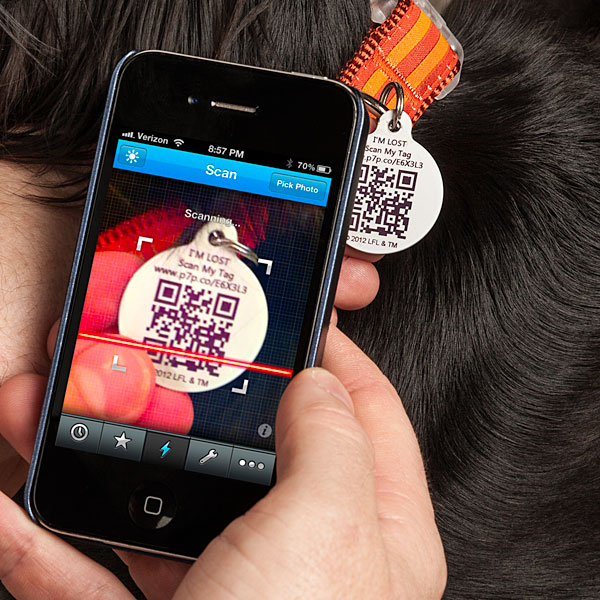
Image Source: Think Geek
It’s National Pet ID Week 2017 from April 16th to April 22nd and we’re helping to spread awareness about the importance of pets wearing ID tags and having microchips. National Pet ID week is a perfect reminder for pet parents to protect their furry family members and ensure that they have current, clear and readable ID tags or any other form of identification to aid them in finding their way home should they becomes lost.
Even the most obedient pets can run off unexpectedly, get lost, or get separated from their pet parent. Having an accurate identification tag on your pet at all times can reunite you with your pet fast. Many pets end up homeless on the streets or stranded in animal shelters waiting to be euthanized or at best adopted, simply because their pet parents can’t be identified.
Therefore, we have taken it upon ourselves to highlight below, the numerous benefits and importance of pet identification tags for National Pet ID Week:
- You Don’t Have To Worry About Losing Your Pet
Should your pet get separated from you while on a road trip or while chasing a bunny rabbit in your backyard, would your pet be able to find its way home? The best way to guarantee your pet’s return is for him or her to wear an ID tag (which is the most common and basic form of identification for pets) or a microchip. The simple collar or ID tag should have your pet’s name, your address and at least one phone number where you can be reached in case of an emergency. This way, you don’t have to worry about losing your pet. There are traditional pet tags you can get engraved at local pet stores or that you can order online. There are also newer pet id tags such as Platinum Pets Pawsitively Safe Pet Finder Tag For Dogs that allows you to make an online profile on your pet and generates an unique code so if your pet goes missing the person who finds your pet calls in the number with the code will be given all the information on your pet that you stored in your online profile. - Indicates a Pet’s Disability or Temperament
Having your pet’s disability or temperament on his or her tag can be helpful. If you have a very shy or aggressive dog that may make him or her difficult to catch, or even a dog that’s blind, deaf, or needs extra care, it’s always helpful to have a collar or ID tag that can quickly inform the finder all the basic information that’s required for an adequate care of your pup before he or she gets back to you. Becoming lost is scary for any dog, but if they have a disability, it might be even more frightening. The idea is to help get your pup get adequate care till he or she is back to safety while keeping the finder safe as well. - Makes Traveling With Your Pet Safer
Pet ID tags makes traveling with your pet a lot safer as most microchip companies offer you an international number that comes handy when you cross borders. Should your pet get separated from you while on vacation, as long as you have updated information on the microchip, all your dog needs to do is be scanned for the ID number to show up. This will give the shelter, veterinarian, or finder an idea of what company to contact. The company will in turn contact you and you’ll be quickly reunited with your poor pup! - Long Lasting
Recently, more and more pet parents are turning to microchips as a long lasting form of identification. They are implanted in the skin of the dogs and they are there always. There’s no need to worry about whether or not your dog has his or her collar on if he or she ever escapes. To learn more about microchips you may like our article on Everything Your Need To Know About Microchipping Your Dog.
So remember, having some sort of identification on our dogs is essential. The chance of your pets getting lost even once is fairly high, and you need to ensure you’re putting measures in place for them to be returned to you. With overcrowded shelters, it’s not likely that your pet is re-adopted. And even if he or she is, he or she is still your dog!
It’s estimated that 40-60% of animals that arrive at a shelter are strays, which means that almost half of them are lost pets. Unfortunately, in most communities, only 10-30% of dogs are claimed by their pet parents. That’s a lot of lost dogs that are never finding their way back home because they weren’t wearing any sort of identification. Keep in mind also that roughly 50% of the dogs that were reunited with their families were done so because of microchips. It’s really recommended to use both ID tags and microchips. You can never be too prepared, and you just never know when that day might come that your beloved pet goes missing!
Does your pet have an ID tag and/or a microchip?
